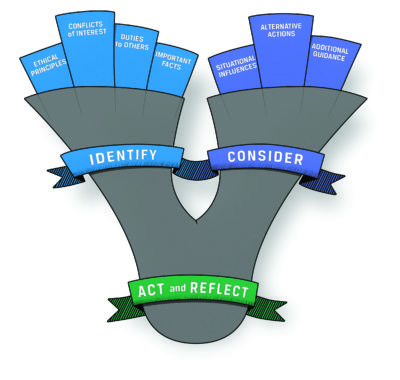Ethics in Practice: Is It OK to Just Quietly Fix Error in Model? Case for Week of 5 March
Analysis now posted below. Be sure to check it out to see which CFA Institute professional standard applies.
Transparency is key to building trust with clients. How would you handle a situation that inadvertently cost your clients some money? Read on see how one money manager handled that situation and let us know what you think about his actions.
Case
Roger Foss is an institutional money manager specializing in a quantitative investment strategy. He developed his own quantitative model that he uses exclusively as the investment decision-making tool for client accounts. Foss heavily markets his “comprehensive and exclusive” model to clients and prospective clients as being an effective tool to manage risk. After using the model for several years, Foss discovers an error that inadvertently eliminated one of the key components for managing risk, leading to underperformance as a result of industry overexposure. During that time, several clients raised questions about their portfolio performance, but Foss attributed it to market volatility. Foss revises the model to address the error and begins to promote his “new and improved exclusive and comprehensive quantitative model.” Foss’s conduct is
- unacceptable because the original model resulted in underperformance.
- acceptable because factors in quantitative models are proprietary and do not need to be disclosed.
- unacceptable because he failed to disclose the error in the model and its impact on client performance.
- acceptable because Foss corrected the error and uses the new model.
Analysis
This case involves CFA Institute Standard I(C): Misrepresentation, which states that CFA Institute members and candidates must not knowingly make any misrepresentation relating to investment analysis, recommendations, or actions. A misrepresentation is any untrue statement or omission of fact that is otherwise false or misleading. Although investment professionals are not required to divulge the proprietary elements of their investment decision-making model, they are prohibited from making statements about the model that are not true. In this case, Foss claimed that his “comprehensive model” would effectively manage risk while at the same time, because of an error, the model omitted a key factor for managing risk. Foss also made misrepresentations to clients by failing to disclose the error and its impact on performance and attributing the model’s underperformance to market volatility rather than the error. Correcting the error and using a new model does not address the misrepresentations. Underperforming the market or benchmark is not necessarily of indicative unethical behavior. But the fact that the original model did not effectively manage risk and led to underperformance also may lead to a violation of the CFA Institute Standard — Diligence and Reasonable Basis requiring CFA members to exercise diligence and thoroughness in analyzing investments and taking investment action. Choice C is the best response.
This case is based on a US SEC enforcement action.
Have an idea for a case for us to feature? Send it to us at [email protected].
More About the Ethics in Practice Series
Just as you need to practice to become proficient at playing a musical instrument, public speaking, or playing a sport, practicing assessing and analyzing situations and making ethical decisions develops your ethical decision-making skills. To promote “ethical exercise,” we are excited to introduce Ethics in Practice.
Each week, we post a short vignette, drawn from real-world circumstances, regulatory cases, and CFA Institute Professional Conduct investigations, along with possible responses/actions. We then encourage you to assess the case through the lens of the Ethical Decision-Making Framework and the CFA Institute Code of Ethics and Standards of Professional Conduct and let us know which of the choices you believe is the right thing to do and why. If you are not a CFA Institute member, you can post your choice and reasoning in the comments section below. For CFA Institute members, we would like you to join the conversation in our Member App and post your responses there. Later in the week, we will post an analysis of the case and you can see how your response compares.
Image Credit: ©CFA Institute


C is the Ans. unacceptable because he failed to disclose the error in the model and its impact on client performance.